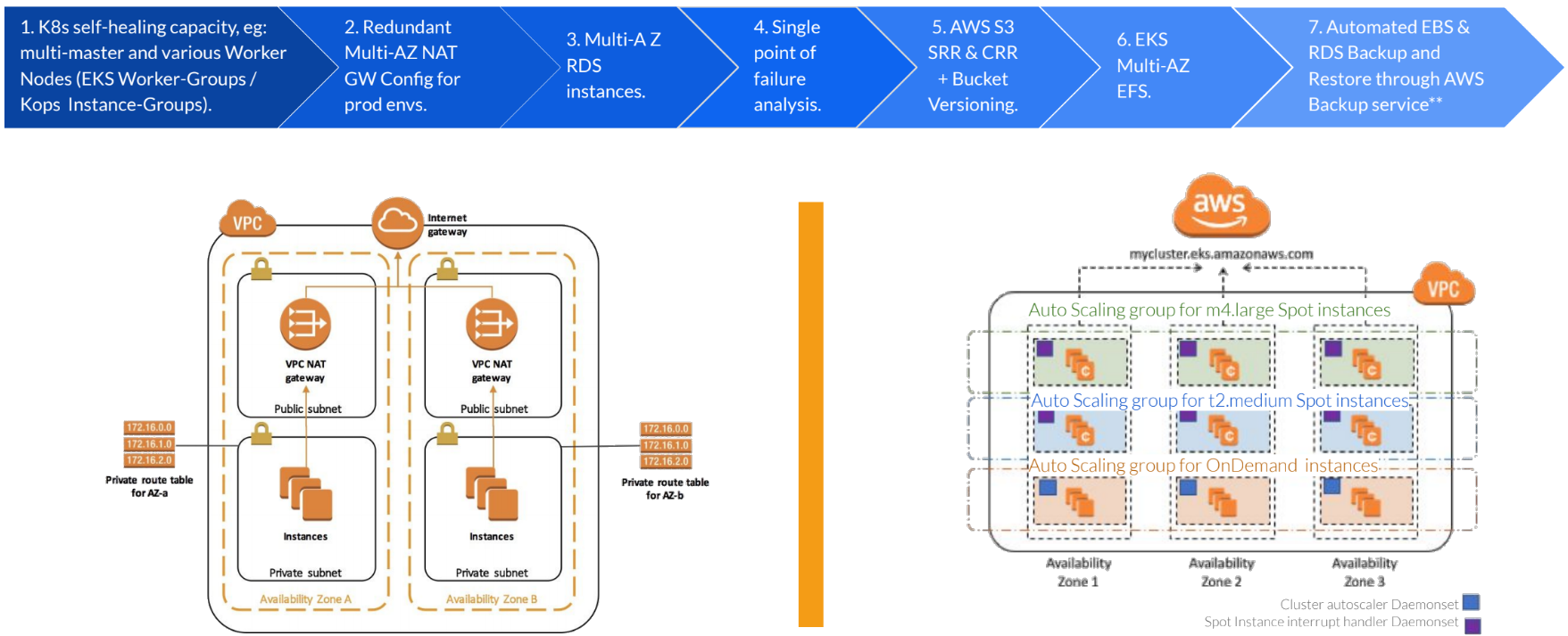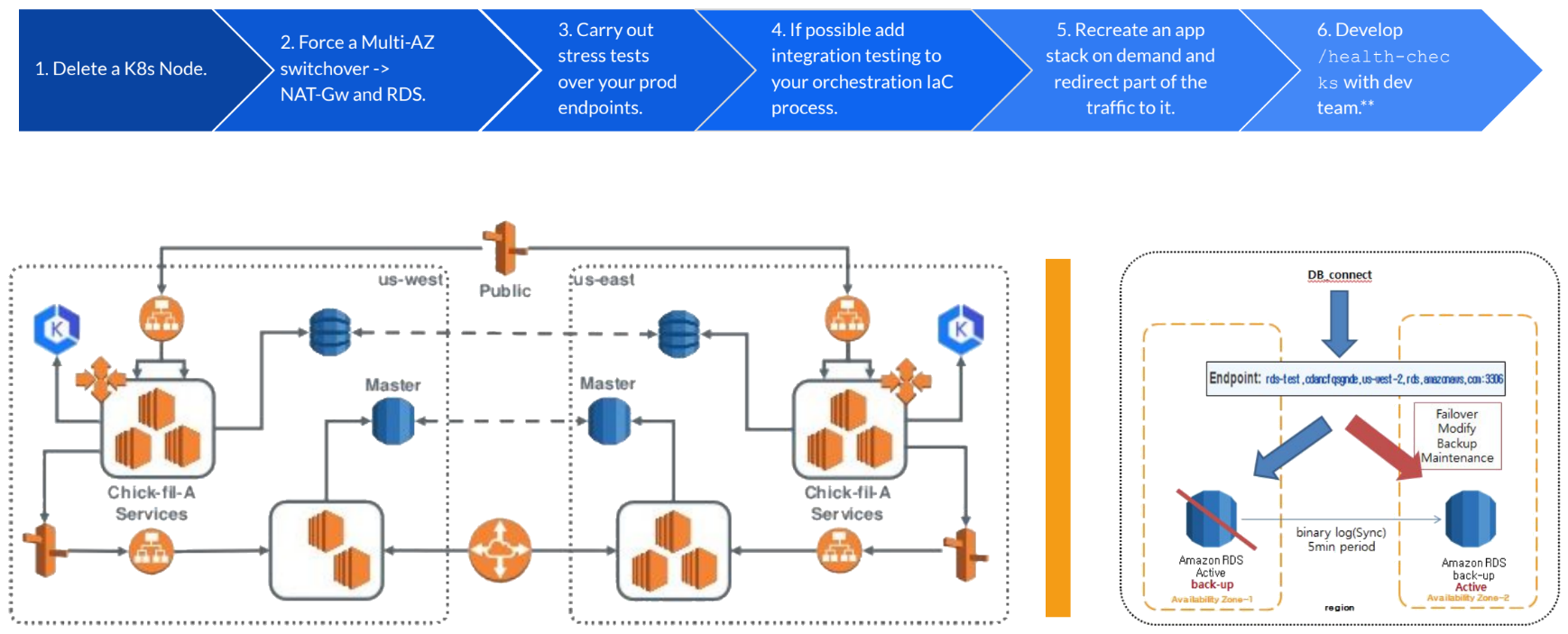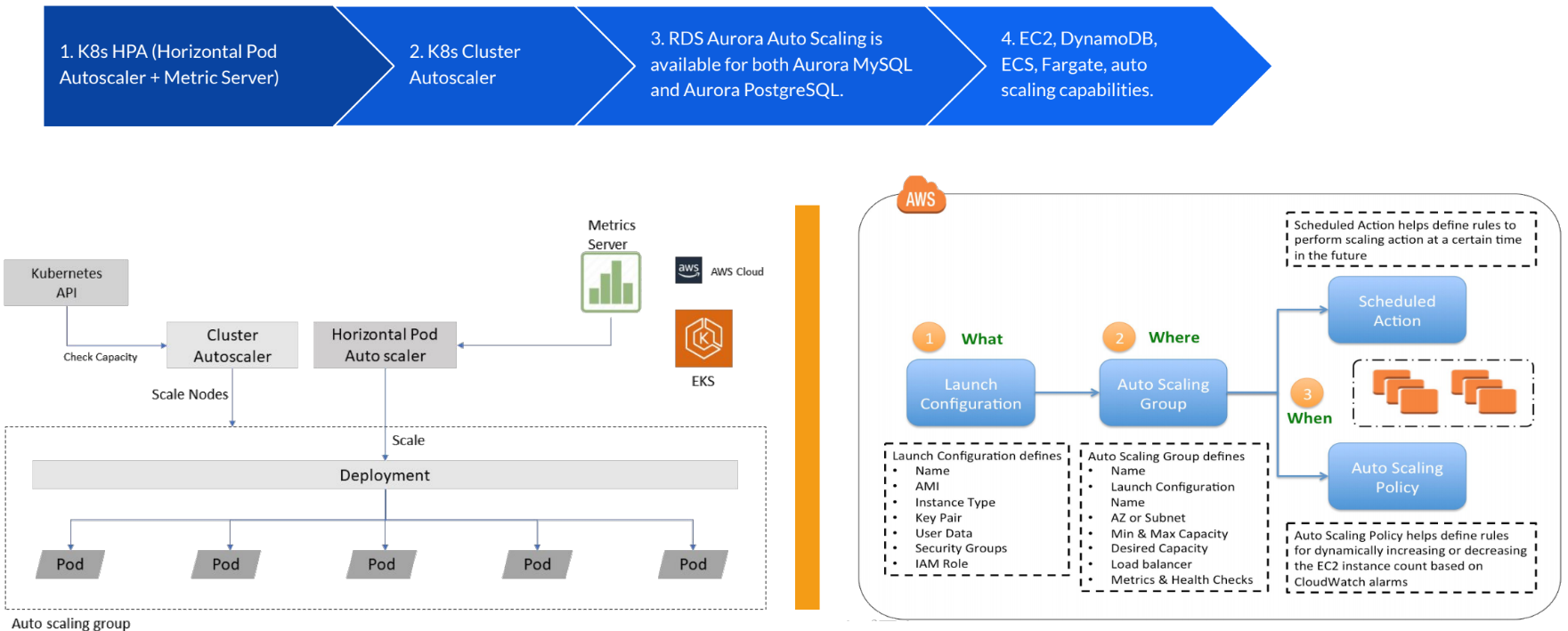High Availability & Helthchecks ¶
Recovery from Failures ¶
Automatic recovery from failure
It keeps an AWS environment reliable. Using logs and metrics from CloudWatch, designing a system where the failures themselves trigger recovery is the way to move forward.

Recovery Procedures ¶
Test recovery procedures
The risks faced by cloud environment and systems, the points of failure for systems and ecosystems, as well as details about the most probable attacks are known and can be simulated. Testing recovery procedures are something that can be done using these insights. Real points of failure are exploited and the way the environment reacts to the emergency shows just how reliable the system it.

Scalability and Availability ¶
Scale horizontally to increase aggregate system availability
The cloud environment needs to have multiple redundancies and additional modules as added security measures. Of course, multiple redundancies require good management and maintenance for them to remain active through the environment’s lifecycle.

Healthchecks & Self-healing ¶
K8s and containers ¶
K8s readiness and liveness probes
Distributed systems can be hard to manage. A big reason is that there are many moving parts that all need to work for the system to function. If a small part breaks, the system has to detect it, route around it, and fix it. And this all needs to be done automatically! Health checks are a simple way to let the system know if an instance of your app is working or not working.
If an instance of your app is not working, then other services should not access it or send a request to it. Instead, requests should be sent to another instance of the app that is ready, or re-tried at a later time. The system should also bring your app back to a healthy state.
By default, Kubernetes starts to send traffic to a pod when all the containers inside the pod start, and restarts containers when they crash. While this can be “good enough” when you are starting out, you can make your deployments more robust by creating custom health checks. Fortunately, Kubernetes make this relatively straightforward, so there is no excuse not to!”
So aside from the monitoring and alerting that underlying infrastructure will have, application container will have their own mechanisms to determine readiness and liveness. These are features that our scheduler of choice Kubernetes natively allows, to read more click here.